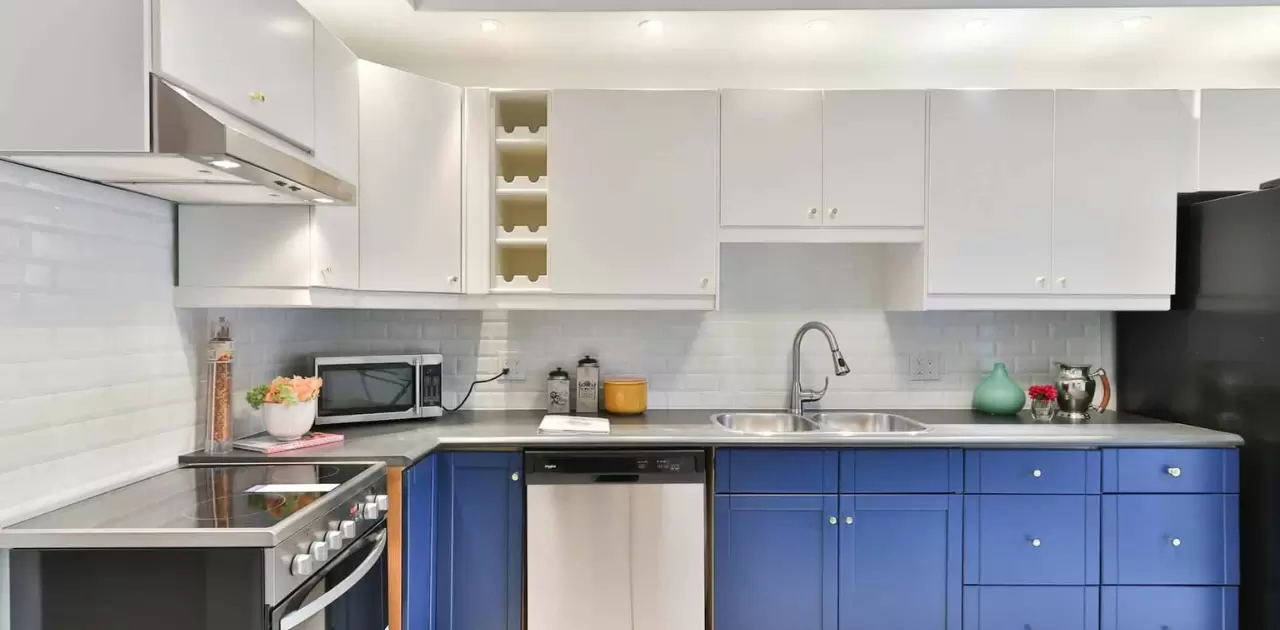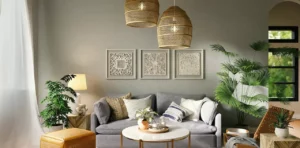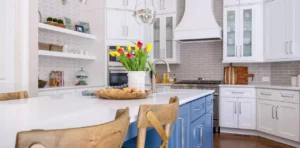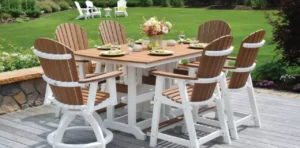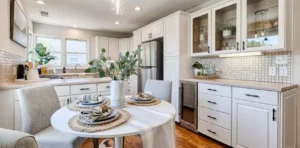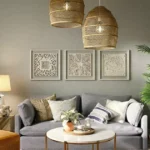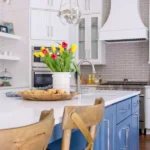Redesigning your kitchen can be an exciting yet daunting task. It is crucial to plan meticulously to ensure a functional and visually appealing space. The layout is the foundation of a successful kitchen design.
Consider the kitchen work triangle which connects the sink refrigerator and cooktop. Keep these areas in close proximity for efficient movement. Allocate ample counter space for food preparation and storage to streamline your cooking routine.
Incorporate sufficient lighting both natural and artificial, to create a bright and inviting atmosphere. Thoughtful planning will transform your kitchen into a true culinary haven where form and function coexist harmoniously.
Planning Your Kitchen Layout
When planning your kitchen layout you need to carefully assess your needs understand the different layout types available and accurately measure your kitchen space.
This approach ensures you create a functional and stylish kitchen that suits your lifestyle
Determining Your Kitchen Needs
Before embarking on a kitchen renovation take the time to assess your specific needs and preferences. Consider your cooking habits family size and entertaining requirements. Do you frequently host large gatherings or prefer intimate dinners? Identifying your priorities will guide the design process.
Evaluate your existing kitchen’s shortcomings and areas for improvement. Lack of storage, inefficient layout, or outdated appliances may be driving factors for the remodel. Determine which features are essential and which can be compromised to align the design with your lifestyle and budget.
Understanding Kitchen Layout Types
Various kitchen layout types offer distinct advantages based on the size and shape of your floor space. The common layouts include:
Galley or Corridor: Two parallel countertops with a walkway in between suitable for smaller kitchens. Efficient workflow but limited space.
L-Shaped: Countertops forming an L-shape along two adjoining walls. Offers ample counter space and an open layout.
U-Shaped: Countertops spanning three walls creating a horseshoe shape. Provides abundant workspace and storage options.
Island: A freestanding counter or cabinet in the center of the kitchen. Enhances functionality and creates an informal dining or gathering area.
Peninsula: An extension of the countertop attached to a wall creating a partial barrier between the kitchen and adjacent room.
One-Wall: All appliances and countertops are arranged along a single wall maximizing space in small kitchens or open-concept layouts.
Zone or Work Triangle: Focused on efficient placement of the sink refrigerator and stove ensuring a smooth workflow.
Also read this: How To Buy A Foreclosed Home In California?
Measuring Your Kitchen Space
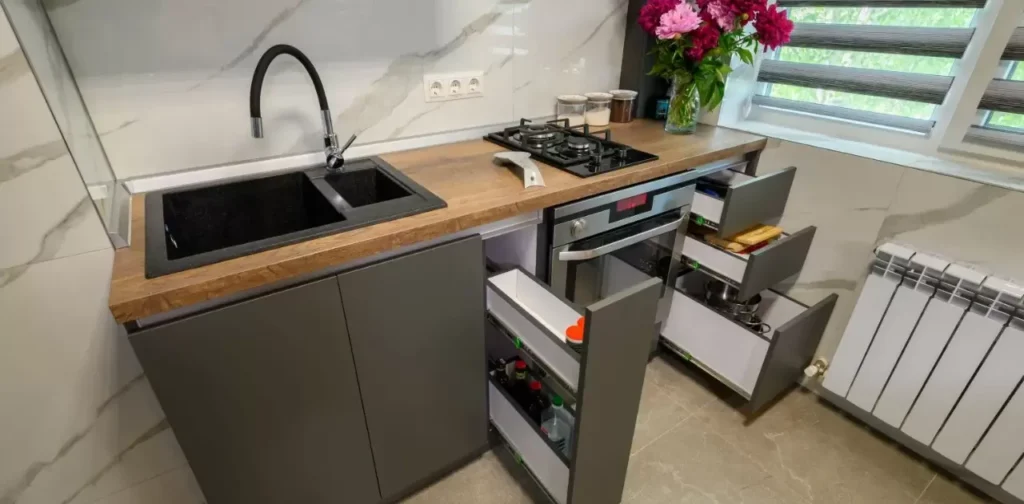
Accurate Measurements: Precisely measure the length width and height of your kitchen including walls doorways and windows. This data is crucial for planning the layout and selecting cabinetry and appliances that fit seamlessly.
Note Obstructions: Identify any structural elements such as pillars beams or pipes that could impact the design or installation process. Plan accordingly to work around these obstacles.
Account for Clearances: Remember to factor in clearance spaces for appliance doors cabinet drawers and walkways to ensure comfortable movement and accessibility within the kitchen.
Selecting Your Kitchen Style and Materials
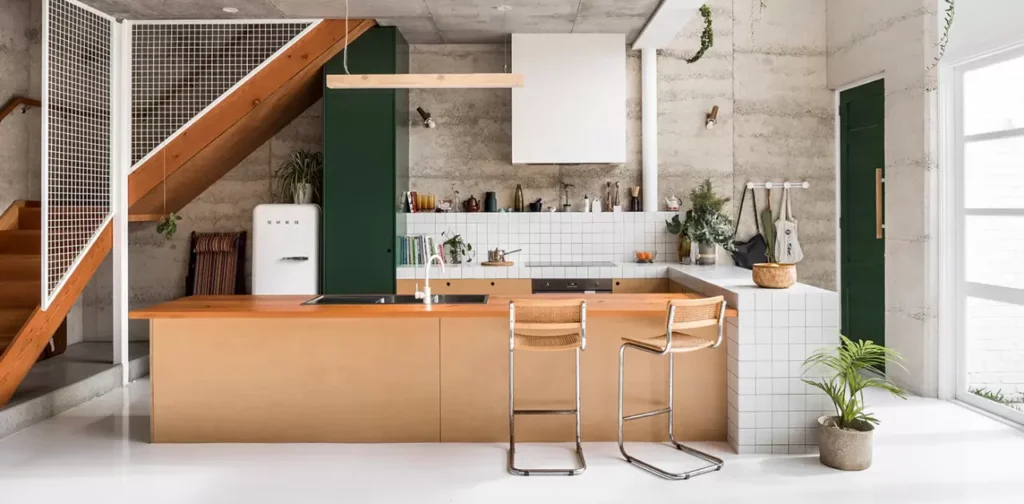
When transforming your kitchen the style and materials you choose will significantly impact the aesthetics functionality and longevity of the space.
Choosing the Right Materials
Countertops play a significant role in both the functionality and aesthetics of your kitchen. From durable granite and quartz to low-maintenance laminate consider materials that align with your lifestyle and design preferences. Factors like heat resistance scratch resistance and ease of maintenance should guide your choice.
Cabinets are the backbone of any kitchen providing ample storage space and visual appeal. Explore options ranging from classic wood finishes to sleek modern laminates or even recycled materials. Ensure the cabinetry complements your overall design scheme while meeting your storage needs.
Flooring is another essential element that must withstand heavy foot traffic and potential spills. Popular choices include hardwood tile or luxury vinyl planks each offering unique advantages in durability water resistance and ease of maintenance. Consider your cleaning routine and personal style when selecting the perfect flooring material.
Deciding on a Color Scheme
Your kitchen’s color scheme sets the tone and ambiance for the entire space. Opt for a neutral palette of white grays or beiges for a timeless and calming atmosphere. Inject personality with pops of bold colors like deep blues greens or warm reds creating a vibrant and inviting environment.
Consider the interplay of colors between cabinets countertops backsplashes and flooring. Harmonious combinations can create a cohesive look while contrasting hues can add depth and visual interest. Pay attention to lighting conditions as colors may appear differently in natural or artificial light.
Optimizing Functionality and Efficiency
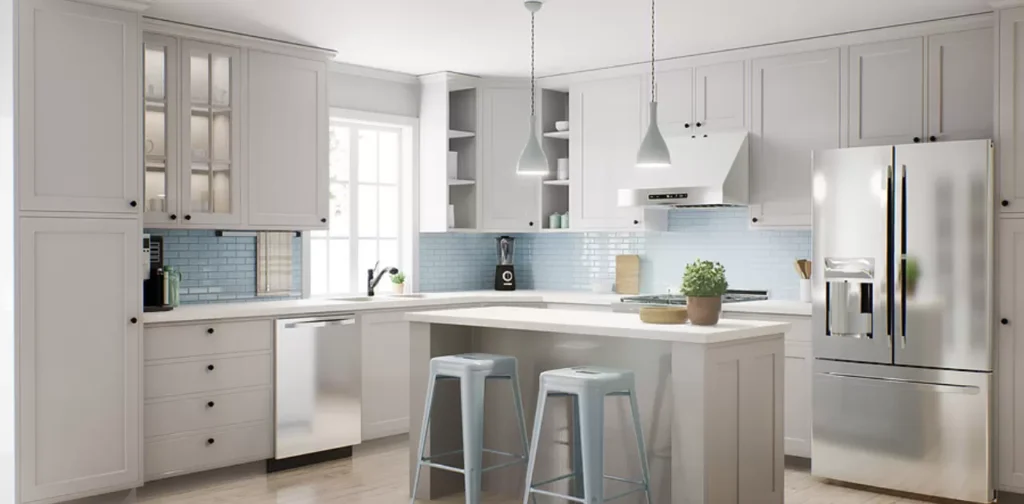
To design a high-performing kitchen attention to green workflows and effective use of space. Key areas encompass strategic association of work zones and the mixing of smart storage answers.
Strategizing Work Zones
When planning your kitchen layout strategize dedicated work zones for tasks like food preparation cooking cleaning and storage. Efficient zoning streamlines workflow and minimizes cross-traffic. Allocate counter space near the stove for prep work and near the sink for cleaning. Proper zoning optimizes functionality and makes cooking a joy.
Incorporating Storage Solutions
Maximize your kitchen’s storage potential by incorporating clever solutions like pull out shelves lazy susans and dedicated utensil drawers. Utilize vertical space with tall cabinets or open shelving. Consider built-in appliance garages to conceal small appliances when not in use. Ample storage keeps your countertops clutter-free and your kitchen organized.
Lighting and Ventilation Considerations
insufficient lights and ventilation could make your kitchen area less functional and uncomfortable. consciousness on deciding on suitable light solutions and making sure proper airflow for a green and inviting kitchen area.
Enhancing with Kitchen Lighting
Enhancing your kitchen with strategic lighting can transform its ambiance and functionality. Use task lighting for work areas ambient lighting for overall illumination and accent lighting to highlight design features. Consider under-cabinet LEDs for a modern touch and pendant lights for a stylish focal point. Thoughtful lighting choices not only improve visibility but also elevate the kitchen’s aesthetic appeal.
Maintaining Proper Ventilation
Maintaining proper ventilation ensures a healthy and comfortable living environment by reducing indoor pollutants and moisture. Use exhaust fans in kitchens and bathrooms open windows regularly and ensure HVAC systems are clean and efficient. Consider adding air purifiers and regularly checking ventilation ducts. Good ventilation prevents mold growth eliminates odors and promotes overall well-being.
Read also this: Hire A Good Handyman Before Selling Your Home
Executing Your Kitchen Remodel
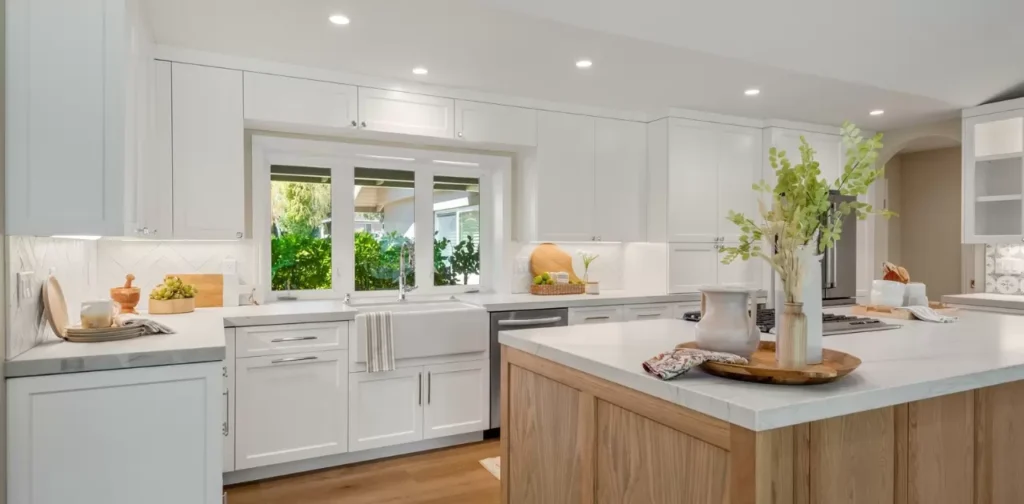
Successfully executing your kitchen redesign entails collaborating correctly with contractors and carefully dealing with your budget. Those steps ensure your kitchen transformation proceeds smoothly and within financial constraints.
Working with Contractors
Working with contractors requires clear communication and detailed contracts to ensure project success. Research and vet contractors thoroughly check references and agree on timelines and budgets. Maintain regular updates and address concerns promptly to avoid misunderstandings. Building a collaborative relationship ensures quality work and smooth project completion.
Managing Your Budget
Managing your budget effectively involves tracking expenses setting realistic financial goals and prioritizing spending. Create a detailed budget plan monitor it regularly and adjust as needed to stay on track. Save for emergencies and avoid unnecessary debt. Consistent budget management leads to financial stability and peace of mind.
Frequently Asked Questions
What are the key elements of a functional kitchen layout?
Focus on the work triangle (sink, stove, refrigerator), ample counter space, and efficient storage to ensure a practical and efficient kitchen design.
How can I maximize storage in a small kitchen?
Utilize vertical space with tall cabinets install pull-out shelves and consider multi-functional furniture to optimize storage in a compact kitchen.
What are the best materials for durable kitchen countertops?
Granite quartz and solid surface materials are popular choices for their durability, low maintenance, and variety of styles.
How do I choose the right lighting for my kitchen?
Combine ambient task and accent lighting to create a well-lit inviting space that caters to both cooking and socializing needs.
What factors should I consider when selecting kitchen appliances?
Consider energy efficiency size style and features that match your cooking habits and kitchen layout to ensure appliances enhance functionality.
How can I create an open and airy kitchen feel?
Use light colors reflective surfaces open shelving, and strategic lighting to make the kitchen appear larger and more welcoming.
What are the latest trends in kitchen design?
Trends include smart appliances sustainable materials minimalistic designs and bold color schemes that combine style with functionality.
Conclusion
Transforming your kitchen requires thoughtful planning and attention to detail. Prioritize a functional layout considering the work triangle and efficient storage solutions. Select durable materials for countertops and cabinetry to ensure longevity. Incorporate a mix of lighting types to create a well-lit versatile space.
Choose appliances that suit your cooking style and fit seamlessly into the design. Use light colors and reflective surfaces to make the kitchen feel open and airy. Stay updated with the latest design trends to incorporate modern elements.A well-designed kitchen enhances both functionality and aesthetics, becoming a central hub for your home.
By focusing on these essential planning tips you can create a kitchen that meets your needs and reflects your personal style. Thoughtful decisions during the planning phase lead to a kitchen that is not only beautiful but also practical and enjoyable to use. Investing in a quality kitchen layout pays off in daily convenience and long-term satisfaction.
